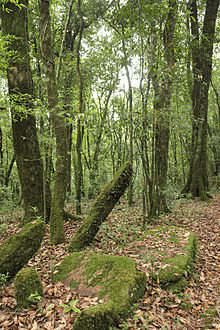Class 10 Geography Chapter 2 Question Answers - Forest and Wildlife Resources (Deducted from CBSE 2021-22 examination)
Q1. Why was Project Tiger launched? What are its objectives? What are its effects on the conservation of wildlife?
Ans: The tiger is a crucial species in the wildlife ecosystem. In 1973, authorities discovered that the tiger population had plummeted to 1,827 from an estimated 55,000 at the start of the century. Major threats to tigers include:
- Poaching for trade
- Loss of habitat
- Human population growth
- Deforestation
Poaching for skins and bones is the primary reason for the drastic decline, pushing tigers towards extinction. With India and Nepal housing about two-thirds of the world's tigers, they became prime targets for illegal activities.
Project Tiger, launched in India in 1973, aims to:
- Ban hunting and poaching of tigers, Restrict trade of tiger skins and bones.
- Provide legal protection to habitats by creating tiger reserves, such as Corbett National Park and the Sunderbans
- Increase the tiger population through natural breeding.
Initially, Project Tiger was successful, with the tiger population rising to 4,002 in 1985 and 4,334 in 1989. However, by 1993, the population had dropped to 3,600, and it continues to decline alarmingly. Tiger conservation is not only about saving an endangered species but also about preserving significant biotypes.
Q2. Discuss the role of local communities in the conservation of forests with the help of examples.
Ans: Local communities play a crucial role in forest conservation in India, often relying on forests for their livelihoods. Their involvement varies from collaboration with government officials to independent protection efforts.
- In Sariska Tiger Reserve, Rajasthan, villagers successfully opposed mining activities by invoking the Wildlife Protection Act.
- In Alwar district, five villages declared 1,200 hectares of forest as Bhairodev Dakav ‘Sonchuri’, establishing their own rules to protect wildlife and banning hunting.
- The Bishnois of Rajasthan are renowned for safeguarding endangered species like black bucks, nilgai, and peacocks.
- The Chipko Movement in the Himalayas, led by local communities, particularly women, effectively resisted deforestation and promoted community-led afforestation with native species.
- Movements such as Beej Bachao Andolan and Navdanya have revived traditional conservation methods and promoted ecological farming.
- The Joint Forest Management programme exemplifies local community involvement in managing and restoring degraded forests.
Q3. What are ‘sacred groves’? Give examples of some species of flora which are worshipped by the tribals. How has the ‘sacredness’ ascribed to plants and animals helped in protecting them?
 Sacred Grooves
Sacred Grooves
Ans: Sacred groves are untouched forests that local communities protect, viewing them as sacred spaces. This ancient belief in nature worship leads to the preservation of these areas, which often host diverse and rare species.
Many tribal societies hold specific plants as sacred, including:
- Mahua (Bassia latifolia) and Kadamba (Anthocaphalus cadamba) trees worshipped by the Mundas and Santhals in Chhotanagpur.
- Tamarind (Tamarindus indica) and Mango (Mangifera indica) trees revered during weddings by tribes in Odisha and Bihar.
- Peepal and Banyan trees, commonly considered sacred across India.
The ascribed sacredness of these plants and animals plays a crucial role in their protection:
- Many animals, such as macaques and langurs, are cared for by temple devotees.
- In Bishnoi villages, animals like blackbuck, nilgai, and peacocks are protected by the community.
Q4. Write a short note on Joint Forest Management. What have been the effect of Beej Bachao Andolan towards conservation of forests?
Ans: Joint Forest Management (JFM) in India is a successful approach that engages local communities in the management and restoration of degraded forests. Key aspects include:
- Formation of local village institutions to protect forest land.
- Community members receive benefits such as access to non-timber forest products (e.g., fruits, nuts, honey) and a share of timber.
- Established in 1988, JFM promotes community involvement in forest conservation.
The Beej Bachao Andolan has significantly contributed to forest conservation by:
- Advocating for ecological farming and reviving traditional conservation methods.
- Demonstrating that diverse crop production can be economically viable without synthetic chemicals.
- Encouraging sustainable practices that benefit both the environment and local communities.
Q5. Write a note on the programmes accepted for conserving forest and wildlife in India.
Ans: Conserving forests and wildlife is crucial for maintaining ecological diversity and supporting our life systems. The National Forest Policy in India focuses on:
- Maintaining environmental stability by preserving and restoring ecological balance.
- Increasing forest cover through afforestation and social forestry initiatives.
- Meeting the demand for fuel, fodder, and minor forest products by enhancing forest productivity.
For wildlife conservation, India has implemented several key measures:
- Established 106 national parks, 564 wildlife sanctuaries, and 18 biosphere reserves.
- Enforced the Wildlife Protection Act.
- Protected endangered species by banning hunting and safeguarding their habitats.
- Initiated projects like Project Tiger, Project Rhino, and Project Elephant to protect threatened species in their natural environments.
- Created 27 tiger reserves under Project Tiger and identified four coral reefs for conservation.
- Linked many wetlands with the river system for better management.
|
66 videos|614 docs|79 tests
|
FAQs on Class 10 Geography Chapter 2 Question Answers - Forest and Wildlife Resources (Deducted from CBSE 2021-22 examination)
| 1. What are the main types of forests found in India? |  |
| 2. How do forests contribute to the ecosystem? |  |
| 3. What are the major threats to wildlife in forests? |  |
| 4. What conservation measures are being taken to protect forests and wildlife? |  |
| 5. Why is biodiversity important in forest ecosystems? |  |






















